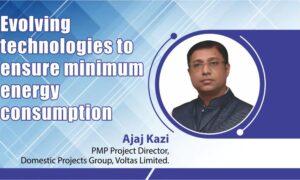Next line of the cold chain would be freezing and frozen food storage.
Cold Chain routes and opportunities there in What I intend is to talk more about the differences when we talk of cold chain. Basically, everyone talks about: Farm to Fork, but when we’re talking about Farm to Fork, we don’t really mean just one particular line of cold chain, we mean multiple lines of cold chain. So, I would like to put across the different lines of cold chain and will be discussing what kind of opportunities come in for those lines. Obviously, the cold chain starts off with farm level activities where production is – and that is where the start is.
There are multiple ways in which the cold chain can be looked at. There is the basic cold storage, where product from the farm is harvested, then it comes into the cold storage, there’s a bit of grading, sorting, teaming, sometimes there is a drying process, like in potato stores, you know it comes in and then it is transported; it comes to the store and then after storage again it comes out and further in terms of potato. If you have smaller chambers, it is called a multi-purpose store; if you have larger chambers, typically a single product it is a bulk cold store.
Kind of opportunities
We could say that the biggest opportunity obviously is in the multipurpose cold store today, going for a cold storage where you are able to store multiple types of products in the same store. So especially if you’re located near any consumption centre, there are so many opportunities that you have where products can be stored in a cold storage. Another interesting opportunity that has come up in this type of store is that multiple new products started coming in to be stored in a cold storage. Over the last four or five years turmeric has been stored, carrots have been stored in cold storage as recently in the last three four years, there is a significant increase in storing of pulses in cold soldiers.
Pack houses
Pack houses themselves have become a very big topic of discussion. What we’re really doing is if you’re considering fresh fruits and vegetables or horticulture produce services, where the product comes in, there will be a process of creating, sorting, and there will be a process of precooling. When we do pre-cooling, we are basically trying to bring down the temperature of the product, the right temperature in a very short span of time. This short span could be as small as one hour, like for strawberries, or maybe six hours, like for grapes, and Pomegranates, this is where pre cooling quickly brings down the temperature and extends the life of the product very significantly. There’s also ripening process in that where we undertake scientific ripening of any product like mangoes, like bananas, all this, this is one of the very big areas of opportunity in India, because this is where the real value addition happens; where with proper packaging, So this is one area of opportunity where we really need to move up.
Business model
The only concern that has been there in this line is always about the business model. Because a pack house will typically be created for a particular type of product, or a particular certain set of products, which are locally grown. If you don’t have products, which are grown through the year or at least seven, eight months of the year, then this pack house is going to remain idle for that much part of the year. And then that’s where the problem really comes up. Because you have a facility which is lying idle for so many parts and for so much time of the year.
We have not reached a stage where any product that we have, actually goes out to the export market, we need to have a serious thought process on this as to how we tackle or how we head into the export market for Indian fruits and vegetables is an extremely big opportunity. The next is controlled atmosphere in controller cluster storage, where other than temperature and humidity there is also control of the oxygen and the carbon dioxide content of the air. So which means you bring the carbon dioxide or the oxygen content to a very low percentage in the range of 1.5 to 3 percent. And you increase the carbon dioxide content of the air to almost about 2.5 to 3 percent. By doing this, you put the product in a deep sleep mode. And this deep sleep helps the product stay almost as fresh as it was. This is mainly used in India today for apples and pears. And typically the most successful models are in the north of the country.
The next line of cold chain would be freezing and frozen food storage. So all of the industries that goes in with freezing, which is the meat industry, the fish industry, the poultry, the frozen fruits and vegetables, all of these which is when we say frozen fruits and vegetables. And then it either goes into the local market or exports. The bigger demand of course is for the export market. This is where again the opportunity for India today.
The fruits and vegetables are a big opportunity even in the future. So either you can export your products in the fresh mode, or you can export them in the frozen mode, both opportunities exist. And fruits and vegetables is one of the biggest areas where India really needs to grow up to the global market, they’re able to do that. We are number two in the world in terms of production. So we really can do a good job in this particular line.
One is the pre frozen line, which is more like ice cream. And all the pre processed food actually comes from the factory itself. And it comes in pre-processed and frozen condition that it is simply put into the store today for transportation. And it finally goes into the supermarket. When we talk of the cold chain, we don’t really talk of any one line. All these lines effectively become a chain; you will see they start from the farm level. They go through this process, there is a transport element, and there is a reefer transport element. And there is the distribution centre or the supermarket or the retailer wherever the final selling point is. This cold chain ends at the distribution centre. I would say in practicality every line of the whole chain assumes importance.
Cookie Consent
We use cookies to personalize your experience. By continuing to visit this website you agree to our Terms & Conditions, Privacy Policy and Cookie Policy.















